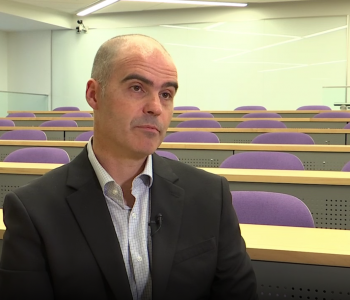 Commentary
Commentary
How Apple, the ultimate product company, is a functional…
The org-du-jour for modern companies is rarely a functional one. Considered outdated as traditional 20th century tops down management, functional organizations are an outgrowth of the need for large functional workforces. When you needed to produce widgets at scale, you needed large numbers of workers, managers of those workers, managers of those managers and so on. The hierarchy and its function reinforced the structure: do what you do efficiently and leadership will ensure it comes together as an end product.
The rise of the knowledge worker, analog to digital transformation and automation changed that. Suddenly, businesses could achieve massive scale with a relatively light workforce. The new worker was not a heads down widget assembler but a highly educated person with ample tools and abilities to create. Thus, the hierarchy was both torn down not only by workers not wanting to be a cog in the wheel but also by managers cut from the same cloth willing to experiment to drive more innovation out of their quite able workforce.
Tech companies tended to lead this charge as massive margins and scale allowed them to toy in areas away from the core business but also retain highly valued employees by affording them flexibility and discretion, to a degree, over what they worked on. This tended to flatten organizations, push decision making down and tear out the base of the traditional hierarchy, mostly to great success, reinforcing its use. Many traditional companies — under pressure of and trying to replicate the innovation within tech companies — are wrestling with their own hierarchies. If not to bring this culture but also to attract and retain the highly valued top-tier knowledge worker.
Amongst tech companies, Apple is a notable outlier. They have retained and thrived under a mostly functional organizational structure and hierarchy. They have even resisted the trend to split into divisions with functional structures like Microsoft did. Some of this was born of tradition being one of the old guard tech organizations. However, how can a company thought of by many as the ultimate tech product organization, thrive with a structure many of their peers consider outdated?
One could argue that Apple is the ultimate manifestation of the functional organization due to their focus on a seamless customer experience. Many tech companies expand from a core base product (e.g. Google’s search, Facebook’s feed, Amazon’s e-commerce store) through ancillary products and services that leverage the network effect. As they experiment with other products, they build up mini-organizations that are mostly self-contained for each of those products. That allows them to iterate and evolve faster and somewhat independently of the core. This is a mostly successful strategy (esp for the three examples above).
However, there is a downside. If your core and side products evolve via largely independent teams, their experience will also diverge creating a disjointed customer experience. Google realized this a decade+ back as Gmail, Maps and GDrive/GDocs became major products. A user moving across them (if they even seamlessly could) might as well have been moving across lightly integrated offerings from different companies. Recognizing this weakness, a team of designers formed a group to unify the experience. It took years and I’m sure a lot of internal arm wrestling but the result was Material Design and now a (more) unified experience.
Apple is the epitome of the unified experience. They marshal a massive, highly skilled workforce to create focused products. They are rigorous about seamless integration through the whole experience which is often their only differentiation. The way they achieve this is at the top of the functional hierarchy. In many ways, this is Steve Jobs’ greatest legacy for the company. His, at times ruthless, focus on experience, unified his executives and thus his teams. They built highly focused and skilled organizations (e.g. chip engineering, user interface design, etc). Because no one (but the execs) had responsibility for the overall experience, they didn’t afford anyone to go off the farm from the core design. In fact, they often kept other functional teams in the dark about what the others were working on only agreeing to limited information and “interfaces” between them for necessary integration.
Thus, one could argue that Apple’s products are what they are due to the functional organization as opposed to being hindered by it. Is it replicable? Perhaps, but the argument that this is Jobs’ greatest legacy has merit. Over the decade or so since his direct involvement waned, the organizational design and culture continues but one could argue that the lack of innovation from Apple since — with mostly incremental and accessory products & services — is due to not having him drive the integrated experience over a functional organization from the top.














